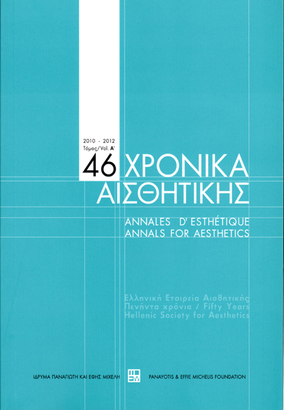Η έννοια της τέχνης πριν από την εποχή της φιλοσοφίας της τέχνης
Part of : Χρονικά αισθητικής : ετήσιον δελτίον της Ελληνικής Εταιρείας Αισθητικής ; Vol.41, No.Α, 2001, pages 69-78
Issue:
Pages:
69-78
Parallel Title:
The concept of art before the era of the philosophy of art
Section Title:
Ανακοινώσεις/papers/articles
Author:
Abstract:
If the ‘era of the philosophy of art’ begins, as we assume, with the autonomy of aesthetic theory and the establishment of the aesthetic conception of art in the second half of the eighteenth century, then this era is mainly represented by traditional aesthetics, which searches for the essence of art and beauty and finds it by definition. Essentialism in aesthetics was first questioned by analytic aestheticians in the 1950s; as was the aesthetic conception of art by the avant-garde in the 1960s. Since then, theorists have turned their attention from the intrinsic, exhibited properties of works of art to the process by which the status of art could be achieved. Thus, art has been explained within the context of an Artworld, in terms of the role played by artistic theories (Danto), by institutional procedures (Dickie), or by historical narratives (e.g. Danto, Carroll, Levinson, Silvers). In some mid eighteenth-century texts (e.g. D'Alembert, D. Hume), when the content and theory of art were still imprecise, one finds interpretations concerning art which either foretell the aims of traditional aesthetics (e.g. the ‘imitation theory’ of art and the search for universal artistic criteria), or depart from these aims (interpretations referring to the conventions of the historical and social context in which art is created and evaluated). This concern for the historical and social context of art is explicitly expressed nowadays.
Subject:
Subject (LC):




